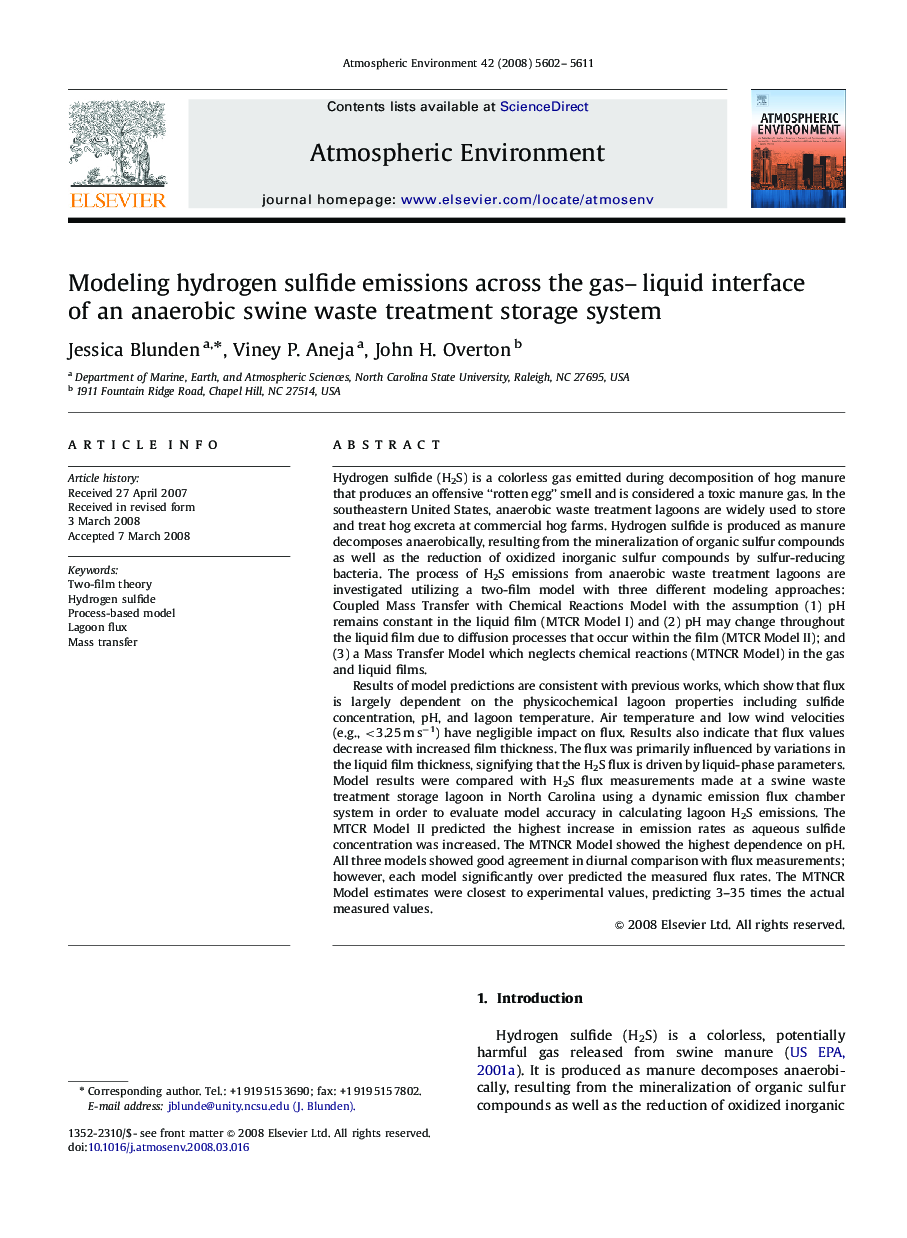| کد مقاله | کد نشریه | سال انتشار | مقاله انگلیسی | نسخه تمام متن |
|---|---|---|---|---|
| 4442093 | 1311137 | 2008 | 10 صفحه PDF | دانلود رایگان |

Hydrogen sulfide (H2S) is a colorless gas emitted during decomposition of hog manure that produces an offensive “rotten egg” smell and is considered a toxic manure gas. In the southeastern United States, anaerobic waste treatment lagoons are widely used to store and treat hog excreta at commercial hog farms. Hydrogen sulfide is produced as manure decomposes anaerobically, resulting from the mineralization of organic sulfur compounds as well as the reduction of oxidized inorganic sulfur compounds by sulfur-reducing bacteria. The process of H2S emissions from anaerobic waste treatment lagoons are investigated utilizing a two-film model with three different modeling approaches: Coupled Mass Transfer with Chemical Reactions Model with the assumption (1) pH remains constant in the liquid film (MTCR Model I) and (2) pH may change throughout the liquid film due to diffusion processes that occur within the film (MTCR Model II); and (3) a Mass Transfer Model which neglects chemical reactions (MTNCR Model) in the gas and liquid films.Results of model predictions are consistent with previous works, which show that flux is largely dependent on the physicochemical lagoon properties including sulfide concentration, pH, and lagoon temperature. Air temperature and low wind velocities (e.g., <3.25 m s−1) have negligible impact on flux. Results also indicate that flux values decrease with increased film thickness. The flux was primarily influenced by variations in the liquid film thickness, signifying that the H2S flux is driven by liquid-phase parameters. Model results were compared with H2S flux measurements made at a swine waste treatment storage lagoon in North Carolina using a dynamic emission flux chamber system in order to evaluate model accuracy in calculating lagoon H2S emissions. The MTCR Model II predicted the highest increase in emission rates as aqueous sulfide concentration was increased. The MTNCR Model showed the highest dependence on pH. All three models showed good agreement in diurnal comparison with flux measurements; however, each model significantly over predicted the measured flux rates. The MTNCR Model estimates were closest to experimental values, predicting 3–35 times the actual measured values.
Journal: Atmospheric Environment - Volume 42, Issue 22, July 2008, Pages 5602–5611